Blois to Chaumont-sur-Loire
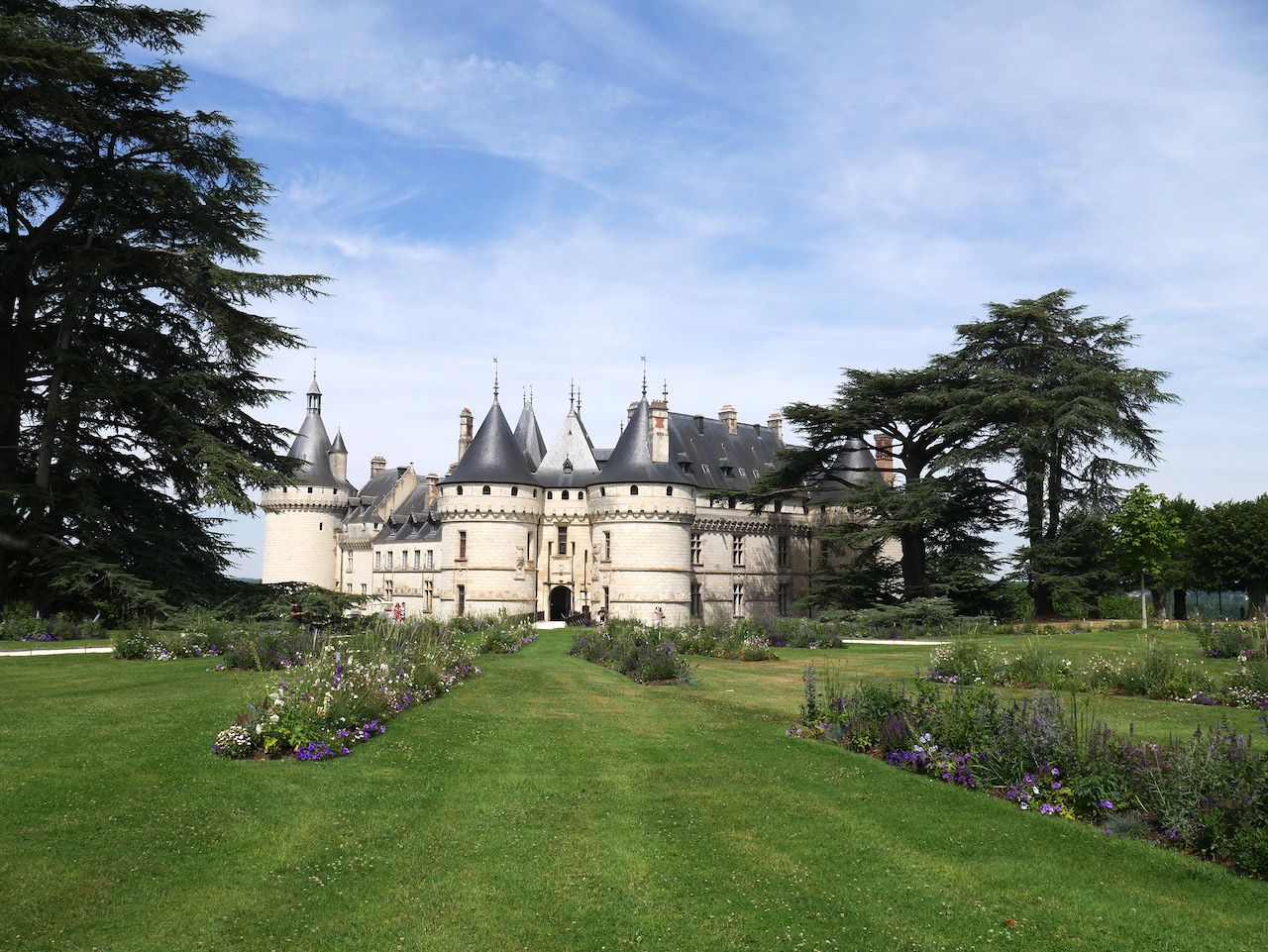
Centre-Val de Loire
6. Blois to Chaumont-sur-Loire
Medium
5h30
20,3km
+222m
-242m
Step
Embed this item to access it offline
You leave Blois by crossing the Loire River and then the Vienne district to go along the Russy forest. The villages follow one another with their churches and their abandoned or superbly maintained castles. You will reach the banks of the Loire before arriving in Chaumont-sur-Loire and its castle built on a rocky spur.
10 points of interest

Façade de la cathédrale Saint-Louis de Blois - Amis saint Colomban TouristSaint-Louis Cathedral in Blois
The cathedral is in late Gothic style. Before becoming a cathedral, it had the title of collegiate church and was placed under the patronage of Saint Solenne. Construction began in the 12th century. But apart from a few remains in its crypt and the base of the bell tower, nothing remains of this church. The facade and the tower of the bell tower were built from 1544. The nave was destroyed by a hurricane in 1678, and reconstruction in the Gothic style took place between 1680 and 1700.
To celebrate the promotion of the church to cathedral status in 1697, Louis XIV donated the organ case in 1704.
American bombing during the Second World War had destroyed most of the stained glass windows of the cathedral. On 22 December 2000, the new stained glass windows created by the Dutch artist Jan Dibbets and the French master glassmaker Jean Mauret were inaugurated as part of a general restoration of the building undertaken in 1985.
More information: Wikipedia
Jardin de l’Évêché à Blois - Amis saint Colomban TouristGarden of the Bishopric in Blois
At the end of the 17th century, Pope Innocent XII created a bishopric in Blois. The first bishop appointed was David Nicolas de Bertier in 1697. The latter, not knowing where to set up his see, looked among the churches of the city for one that could become a cathedral. He turned towards the church of Sainte-Solenne and the land surrounding it.
Following the installation of the bishop, and throughout the first half of the 18th century, terraced gardens were laid out on the site.
Throughout the 18th century, the various bishops of Blois embellished the bishopric and its gardens. Despite some changes in the vegetation, today's garden looks very much like the original, as evidenced by a plan dating from 1793. The area was reduced in size in the north-east due to the sale of part of the vegetable garden during the French Revolution.
You can view the gardens from the park behind St. Louis Cathedral.
To visit the Gardens
Château royal de Blois - Amis saint Colomban HistoricalRoyal Castle of Blois
During the reign of Charles the Bald, in 854, the Blisum castrum ("the castle of Blois"), built on the banks of the Loire, was attacked by the Vikings. The rebuilt fortress is at the heart of the region, controlled by the Counts of Blois, powerful feudal lords in the 10th and 11th centuries.
In the 13th century, the castle is rebuilt by the Burgundian family of Châtillon. The chronicler Jean Froissard described it as "beautiful and large, strong and lush, one of the most beautiful in the kingdom of France". The last descendant of the family of Châtillon, Guy II of Blois-Châtillon, sold the house in 1392 to Louis d'Orléans, brother of Charles VI.
In 1429, before her departure to lift the siege of Orleans, Joan of Arc is blessed in the chapel of the castle of Blois by Regnault de Chartres, Archbishop-Duke of Reims.
On 27 June 1462, Louis d'Orléans, son of Charles I of Orléans, was born in the castle of Blois. He became King of France in 1498 under the name of Louis XII; the medieval castle of the Counts of Blois became the royal residence and Louis made it his main residence, to the detriment of the castle of Amboise. Louis XII undertakes, with Anne of Brittany (his wife since 1499), a reconstruction of the castle in what will be called thereafter the Louis XII style by combining the flamboyant Gothic style with elements already belonging to the Renaissance style. During the following centuries the crowned heads will occupy the castle and embellish it.
More info: Wikipedia
To visit the castle
Vue générale de l’église Saint-Vincent de Paul, depuis le château de Blois - Amis saint Colomban TouristSaint-Vincent-de-Paul Church in Blois
In 1581, King Henri III ordered the construction of a chapel for the college he had just decided to create in Blois. In 1622, the Jesuits took charge of the establishment, at the request of the town's notables. It is thus finally in 1634 that the construction of a chapel begins on the plans of Estelle Martellange. However, the work drags on and it is only in 1655 that the exterior construction of the building is completed under the direction of Charles Turmel. From 1670, the chapel was transformed into a monument to the glory of the prince and his family.
In 1773, the Jesuits were expelled from France and therefore lost the direction of the Royal College and its chapel. During the Revolution, the establishment is disused.
Transformed into a fodder store shortly afterwards, the chapel only became a place of worship again in 1826, when it became Saint-Vincent-de-Paul church, before being renamed Notre-Dame de L'Immaculée Conception church in 1856. In the middle of the 19th century, the architect Jules de La Morandière undertook the restoration of the church. It was not completed until 1873.
According to Jesuit tradition, the church faces northwest, southeast.
L’église Saint-Martin de Chailles - Amis saint Colomban TouristSaint Martin's Church in Chailles
The church of Saint-Martin depended on the abbey of Bourgmoyen. Despite a refurbishment in the 15th and 16th centuries, the building retains elements from the pre-Romanesque period and the 13th century. The plan consists of a rectangular nave, a north aisle, a choir ending in a three-sided apse and a chapel to the south. Brick vaults added in the 19th century cover the nave and its aisle. The choir is decorated with 17th century wainscoting, the frescoes executed by Maurice de Vaines in 1858 are in very poor condition. The capitals of the nave bear a sculpted decoration of foliage from the Renaissance period. It is possible to see an oil on canvas depicting the Crucifixion, after or from Simon Vouet's workshop.
An association, "Les Amis de l'église Saint-Martin de Chailles" promotes the heritage of the church. Information inside the building.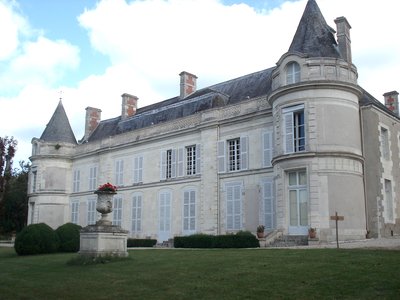
Château du Plessis Villelouet - Lyokodaxter1 — Travail personnel, CC BY-SA 3.0, commons.wikimedia.org HistoricalThe castle of Plessis Villelouet in Chailles
Private property, not open to the public.
The seigniory is mentioned from the 14th century onwards. The castle had two towers enclosing a central body, the whole surrounded by moats. Thereafter, two symmetrical wings closed the courtyard forming a U. In the 18th century, the architect Jean-Baptiste Collet took over the facades of the central body, pierced the attic with dormer windows and fitted out the interiors. The architect concealed the medieval turrets and pierced the facade overlooking the park with large bays. In 1840, restoration work was carried out by the architect Courtiller. The chapel, in a neo-flamboyant style, was interiorly decorated by Maurice de Vaines. A model farm was built, the parklands redesigned and the driveway created. The property's dairy associated with a rustic cave, under the main cowshed stable of the model farm, does not seem to be from the same period.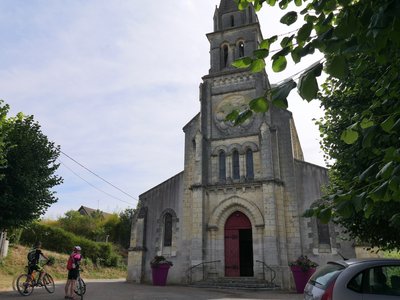
Façade de l’église Saint-Bienheuré à Candé-sur-Beuvron - Amis saint Colomban TouristSaint-Bienheuré Church in Candé-sur-Beuvron
The neo-Gothic church of St. Benedict was rebuilt in the 19th century. The stained glass windows are worth a visit.
L’entrée du château de Madon à Candé-sur-Beuvron - jacques.prudhon HistoricalMadon Castle in Candé-sur-Beuvron
Situated on Via Columbani the castle is abandoned and cannot be visited.
The current castle is located on the site of an old pleasure house of the Counts of Blois. This property once belonged to the abbey of Saint-Lomer who received it around the year 1000 from a knight. The abbots of Saint-Lomer made it a place of rest and entertainment. On October 26, 1498, Louis XII came from Blois to be questioned by an ecclesiastical council on his request to annul his marriage with Jeanne de Valois. In 1698, the abbey of Saint-Lomer was attached to the bishopric of Blois and the place became the country house of the bishops of Blois. From 1468 to 1505, the primitive castle, which had suffered from the Hundred Years' War, was rebuilt. The present castle was built around 1770 by Monseigneur de Termont, Bishop of Blois.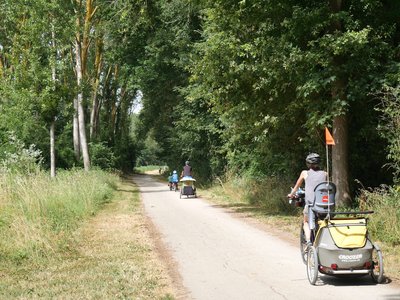
En famille entre Blois et Chaumont-sur-Loire - Amis saint Colomban PanoramicGreenways the Loire by bike and cycle track Euro 6
Several greenways accompany you on your journey along the Loire. Each region is developing this gentle itinerary on foot or by bike which makes users feel safe.
An opportunity to make beautiful encounters as a family or as a pilgrim. Information panels are placed along the route to help you discover the natural heritage.
The Euro cycle path Euro vélo 6 connects the Black Sea to the Atlantic Ocean. It follows the Loire from Nevers to Nantes.
Beware the cycle path along the Loire can be sandy.
More information : Wikipedia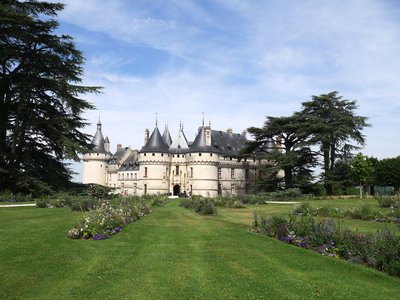
Château de Chaumont-sur-Loire - Amis saint Colomban HistoricalChaumont-sur-Loire Castle
The history of the castle begins in the 10th century, Eudes I, Count of Blois, built a fortress to protect the city of Blois against attacks by the Counts of Anjou. In these fierce struggles, a knight of Count Eudes II, Gilduin de Saumur nicknamed the Devil of Saumur, so much noticed his zeal in fighting against the Count of Anjou Foulques Nerra, that the latter rewarded him by giving him the Chaumont castle.
In 1465, Louis XI ordered Chaumont to be burned and razed to the ground to punish Pierre d'Amboise for having revolted against the royal power during the "League of the Public Good". Back in grace, the d'Amboise family is authorized to rebuild the castle.
On 31 March 1550, Queen Catherine de Medici bought the castle from the d'Amboise family. A few years later, she exchanged it for the castle of Chenonceau owned by Diane de Poitiers.
Marie Say became the owner in 1875. She married shortly after Amédée de Broglie (son of Albert de Broglie). They had luxurious stables and a landscaped park laid out in the English style.
More information: Wikipedia
The estate of Chaumont-sur-Loire and the castle, owned by the Centre-Val-de-Loire region, can be visited, allow 3 to 4 hours for an entrance fee of 18 euros. A Garden Festival takes place there every year.
Information for the visit of the castle
Description
You leave the cathedral of Blois by your way of arrival and you cross the Loire on the Jacques Gabriel Bridge, after the bridge, first street on the right, quai Villebois Mareuil, first street on the left, rue Gaston d'Orléans.
- Rue Croix Boissée, on the left then immediately on the right, rue du 28 janvier, second on the right rue des Acacias, continue on the dirt road of the levée des Acacias, cross D 951, rue des Ponts Saint-Michel, at the crossroads on the right dirt road, go along the forest.
- At Chailles chemin de Saint-Gervais, turn right then left towards rue Nationale, D 751, straight ahead at the fork in the road, rue de la Vallée.
- Go round the park of the château de Villelouet, first road on the right.
- Straight ahead at the crossroads, rue des Prés, turn left on chemin de terre, straight ahead, Gâte-Argent stay on your right, chemin de terre. Turn left at the crossroads, asphalt road
- Turn right in front of the entrance of the castle of Madon, cross Madon, on the right, rue de la Loire,
- After the third street on the left take the road on the left, cross the rue de la Carenne, straight ahead, left, rue des Châtaigniers, junction D751 on the right
- Go through Candé-sur-Beuvron, rue de Blois, go down towards Beuvron, after the bridge over the Beuvron, on the right, take the dirt road that runs along the Beuvron.
- At the edge of the Loire, turn left, farm road, join the banks of the Loire up to the church of Chaumont-sur-Loire.
- Departure : Saint-Louis Cathedral, 7 Place Saint-Louis, 41000 Blois
- Arrival : Saint-Nicolas Church, Rue Maréchal De Lattre, 41150 Chaumont-sur-Loire
- Towns crossed : Centre-Val de Loire
Altimetric profile
Transport
Report a problem or an error
If you have found an error on this page or if you have noticed any problems during your hike, please report them to us here:








